Jinggangshan is located in Ji’an City in the southwest of Jiangxi Province. It is located in the middle section of the Luoxiao Mountains at the junction of Hunan and Jiangxi provinces. In ancient times, it was known as “at the junction of Chenzhou, Hengyang, Hunan and Jiangxi, in the belly of the thousand-mile Luoxiao Mountains.” The Jinggangshan scenic area covers an area of 333 square kilometers and has 11 major scenic areas, 76 scenic spots, and more than 460 landscape features. Thousands of peaks compete in beauty, and thousands of valleys contend in flow. The vast forest sea, flying waterfalls and flowing springs combine magnificence, danger, tranquility, strangeness and beauty. There are peaks and ridges, rocks, waterfalls, karst caves, hot springs, rare animals and plants, and alpine pastoral scenery. There are not only magnificent sea of clouds, wonderful and unique waterfalls, magnificent and splendid sunrises, and the world-famous ten-mile azalea corridor, but also the Huangyangjie and MaoPing Bajiao Tower that are famous all over the world, as well as the Jinggangshan main peak in the background pattern of the fourth edition of 100 yuan RMB. There is also the most complete sub-primeval forest preserved so far at the same latitude in the world. In addition to the gorgeous natural scenery, Jinggangshan has forged a world-famous “cradle of revolution” with its glorious and splendid revolutionary history. With its profound red cultural heritage, it has become a “spiritual home” in people’s hearts. In the majestic five hundred li Jinggang Mountains, 108 revolutionary historical sites and relics are scattered among them. It has become a revolutionary history museum without walls, a vivid classroom for people to cultivate sentiment, purify the soul, improve the realm and strengthen beliefs, and an important base for patriotism education and revolutionary tradition education. The Jinggangshan scenic area currently has ten scenic areas such as Ciping Scenic Area, Huangyangjie Scenic Area, Longtan Scenic Area, Main Peak Scenic Area, and Du Juan Mountain Scenic Area. There are many scenic spots represented by Longtan, Wuzhi Peak, Golden Toad Looking at the Moon, Big and Small Wujing, Ciping, and stele forest.
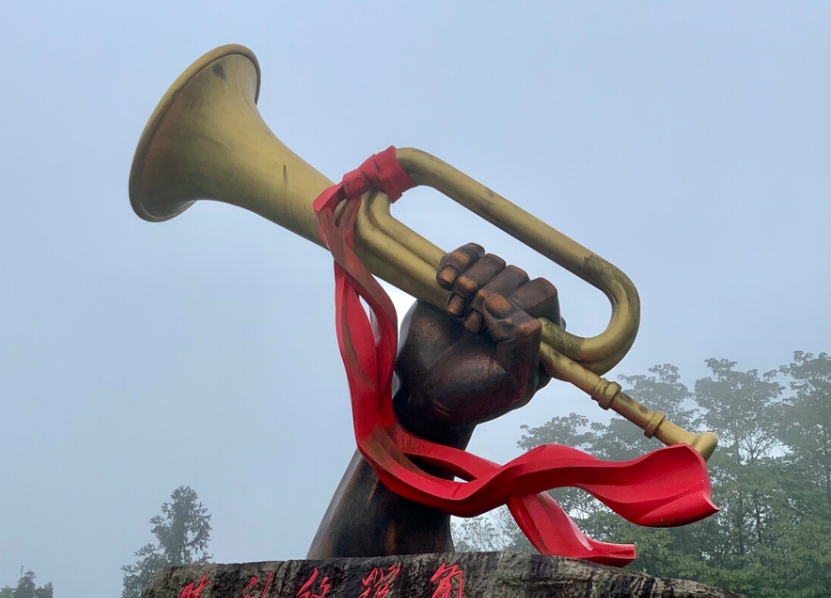
Longtan, also known as Five Dragon Pools, gets its name because the Wushen River leaps over the mountain rocks five times in a river course of less than two kilometers, forming five terraced waterfalls and deep pools. The Longtan scenic area is a scenic spot in Jinggangshan. It covers an area of 889 hectares. Except for Xiaojing, it is all natural landscapes and is famous for its waterfalls.
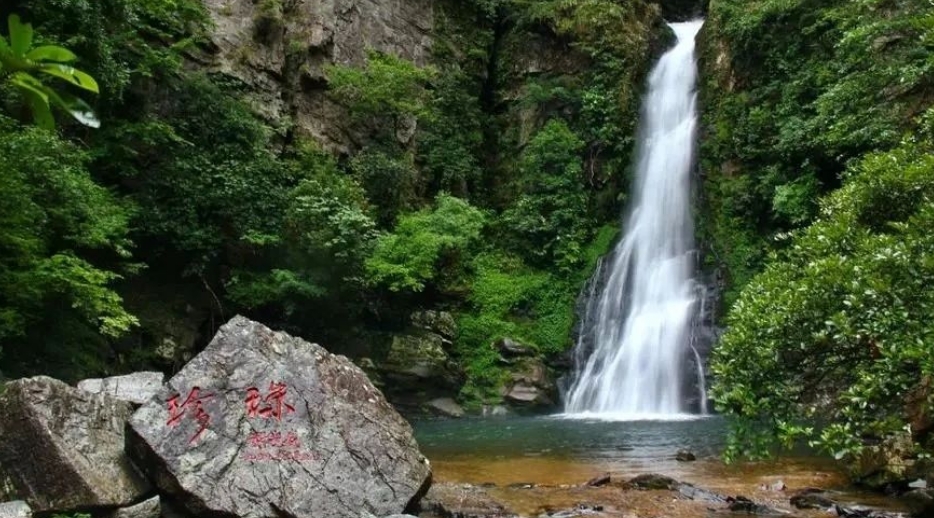
Longtan
Wuzhi Peak is located six kilometers southwest of Ciping. It gets its name because the peaks look like the five fingers of a human hand. It has an altitude of 1438 meters. The peaks of Wuzhi Peak extend from southeast to northwest for dozens of kilometers. There is no one in sight. People can only look from afar on the “observation deck” on the other side. It has been listed as a nature reserve. There are huge peaks on both sides facing each other, and in the middle is a deep valley. At the bottom of the valley is the Longqing River, that is, the valley of the Jinggangshan River. The cliffs on the river valley are rich in stone fungus and so on. There is also a waterfall on Wuzhi Peak with a drop of about 200 meters. The waterfall of Wuzhi Peak is the largest waterfall in Jinggangshan.
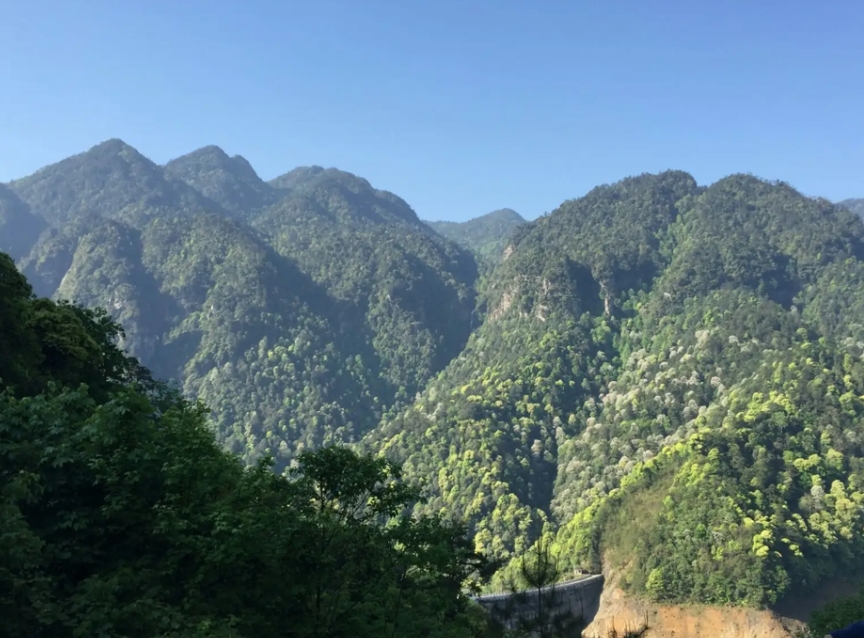
Wuzhi Peak
Golden Toad Looking at the Moon is located in the Du Juan Mountain scenic area (that is, Bijia Mountain before its name was changed). In a dense azalea forest, there are several huge stones, slanting forward and backward, shaped exactly like a golden toad with a black frame. Looking up at the sky day and night, people call it the “Golden Toad Looking at the Moon” stone. It is one of the beautiful sceneries of Bijia Mountain. Opposite the “Golden Toad Looking at the Moon” stone, there is a cluster of alpine azalea forests. 50 meters to the west of the “Golden Toad Looking at the Moon” stone, there are several relatively large and flat stones.
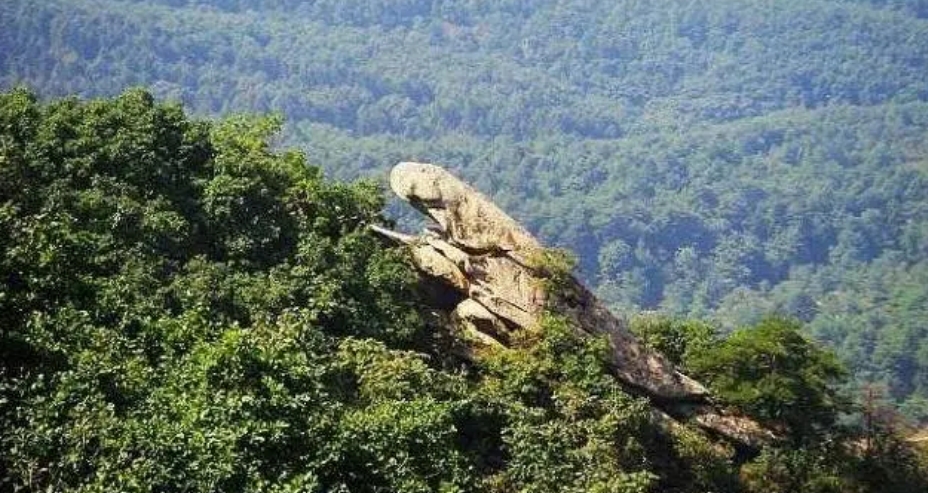
Golden Toad Looking at the Moon
Ciping is the center of the revolutionary struggle in Jinggangshan. It is located in a small basin among the lofty mountains. There are revolutionary museums, martyrs’ memorial towers, etc. There are roads leading to various memorial sites and major scenic spots from Ciping. The five major sentry posts on the revolutionary battlefield are not far from Ciping and can be reached by Wushao Highway. Among the five major sentry posts, Huangyangjie has an altitude of 1343 meters. It is located high and overlooking the mountain pass. With a dangerous terrain, the local people call it Motianling.
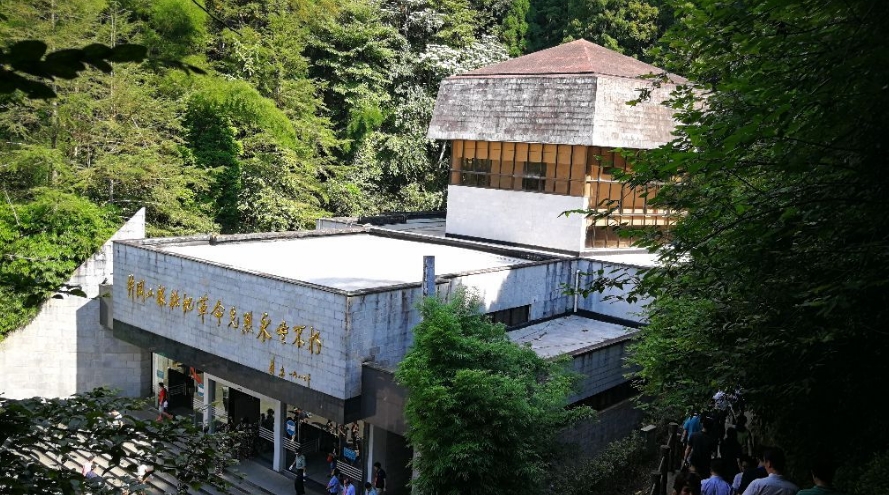
Ciping
Big and Small Wujing refers to five mountain basin villages surrounded by mountains and shaped like wells, namely Dajing, Xiaojing, Zhongjing, Shangjing and Xiajing. Dajing is the largest village among them and was an important place for Mao Zedong, Zhu De, Chen Yi, Peng Dehuai and other Red Army soldiers to carry out revolutionary activities. On October 24, 1927, Mao Zedong led his troops to Jinggangshan and arrived at Dajing for the first time. Since then, this place has become a permanent place for the Red Army. Mao Zedong, Zhu De, Chen Yi and others have deployed battles here many times and smashed many military “encirclement and suppression” by the reactionary forces of the Kuomintang.
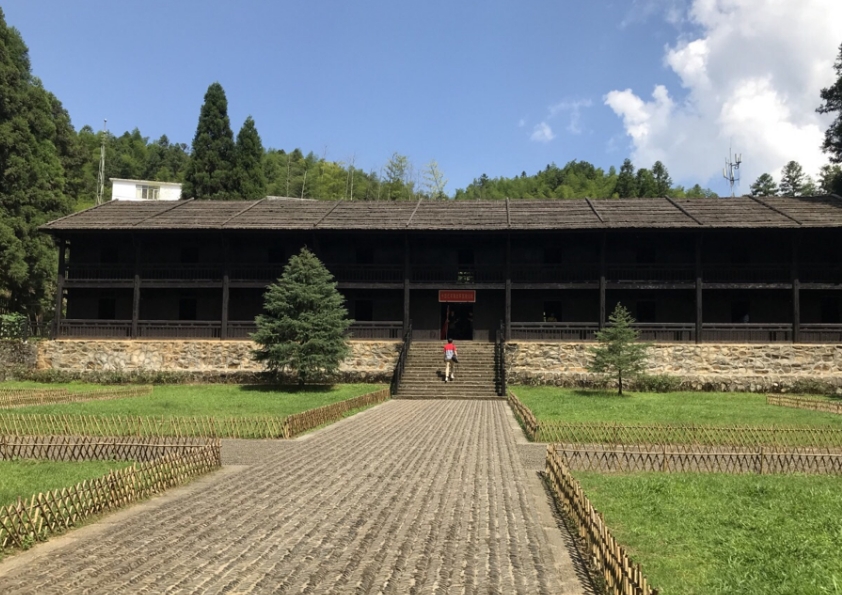

Big and Small Wujing
(I) Transportation
The Jinggangshan scenic area is located in Ji’an City in the southwest of Jiangxi Province, about 120 kilometers away from Ji’an urban area. Surrounding railway stations of the Jinggangshan scenic area include Jinggangshan Station, Ji’an West Station, etc.; the airport is Jinggangshan Airport; there are also bus stations such as Jinggangshan Bus Station. Surrounding tourists can also drive there, which is relatively convenient. The following is a detailed introduction to the above several travel methods.
①Railway station: Jinggangshan Station. Jinggangshan Station is located on Yingbin Avenue, Nashan Township, Jinggangshan City, Ji’an City. It is about 28 kilometers away from the Jinggangshan tourist center. After arriving at Jinggangshan Station by high-speed rail or train, you can choose to take Bus No. 98 at the entrance of the railway station to Ciping Town and get off at the “Jinggangshan Tourist Service Center” station and walk for 5 minutes to the main entrance of Jinggangshan Center; or take a taxi or online car-hailing service. Ji’an West Station. Ji’an West Station is located on Yangming West Road, Jizhou District, Ji’an City. It is about 120 kilometers away from the tourist center of Jinggangshan scenic area. After arriving at Ji’an West High-speed Railway Station by high-speed rail or train, you can walk for 3 minutes to Ji’an High-speed Railway Bus Station and take a passenger bus (Ji’an High-speed Railway Bus Station – Jinggangshan scenic area). The bus passes through Jinggangshan Center and the terminal is Jinggangshan Bus Station. It takes a long time of about 140 minutes.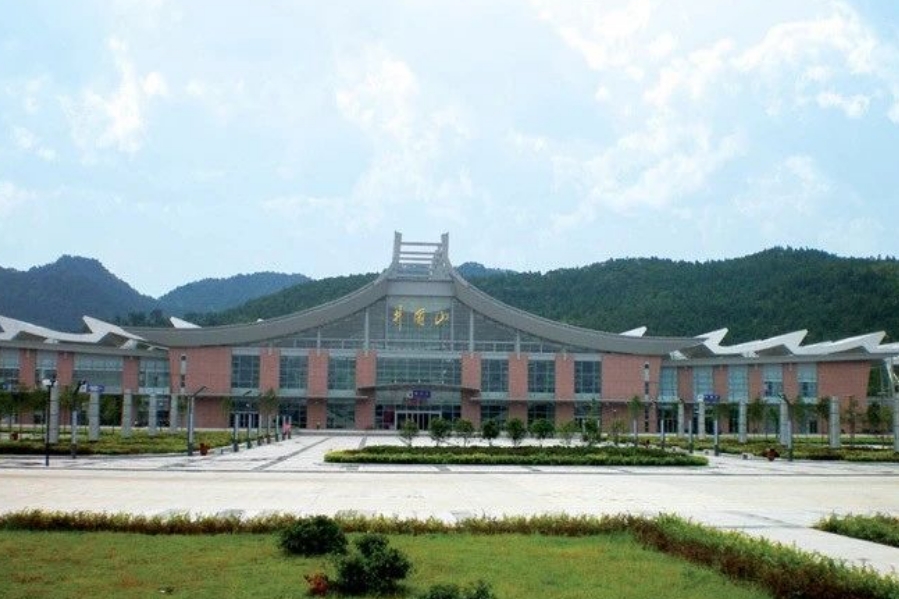

②Airport: Jinggangshan Airport. Jinggangshan Airport is located on 804 County Road, Luoxi Town, Taihe County, Ji’an City. It is 80 kilometers away from the tourist center of Jinggangshan scenic area. After arriving at Jinggangshan Airport by plane, you can take the airport shuttle bus to Jinggangshan scenic area and arrive at Jinggangshan scenic area in about 90 minutes.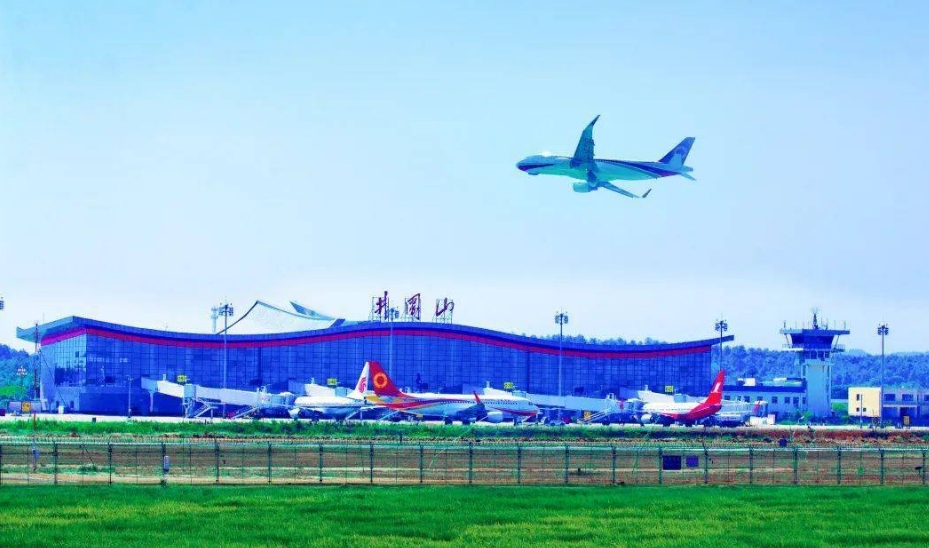

③Bus: Jinggangshan Bus Station. Jinggangshan Bus Station is located at No. 26, Tongmuling Road, Jinggangshan Nature Reserve, Jinggangshan City, Ji’an City. It is about 1.5 kilometers away from the tourist center of Jinggangshan scenic area. After arriving at the passenger transport station, you can take Bus No. 98 to reach the tourist center of Jinggangshan scenic area or walk there. Surrounding tourists can consider taking a bus there, which is relatively convenient.
④Self-driving: The Jinggangshan scenic area is located in Jinggangshan City, Ji’an City in the southwest of Jiangxi Province. Puyan Expressway is relatively close. Surrounding tourists can choose to drive there, which is relatively convenient. Just navigate directly to the parking lot of the tourist service center of Jinggangshan scenic area.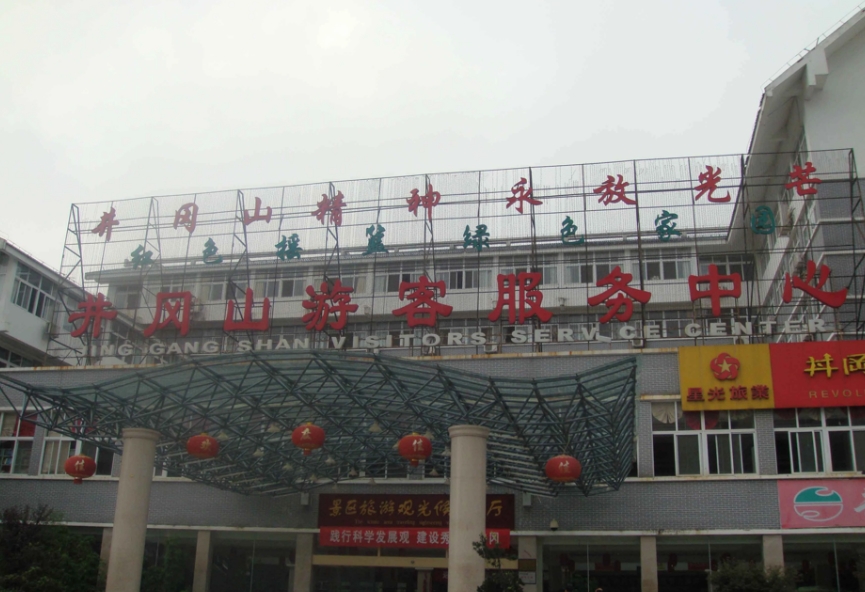

⑤Transportation within the scenic area: The Jinggangshan scenic area is large with many scenic spots and a long distance between each scenic spot. In order to facilitate tourists’ travel, the scenic area adopts the method of tourists gathering at the 1928 tourist service center (hereinafter referred to as: “main station”) and taking sightseeing buses to enter the scenic area for sightseeing.
(II) Accommodation
The Jinggangshan scenic area is relatively large, and there are many scenic spots scattered everywhere. Although there are scenic sightseeing buses that can connect the scenic spots well, if you want to visit all the scenic spots, it will take three or four days. Generally, you can choose to visit several main scenic spots and make choices according to the length of time. There are many accommodation places in the Jinggangshan scenic area, mainly concentrated in Ciping Town (that is, the tourist center of Jinggangshan scenic area), Big and Small Wujing. There are also many homestays near various small scenic spots in the scenic area for tourists to choose from.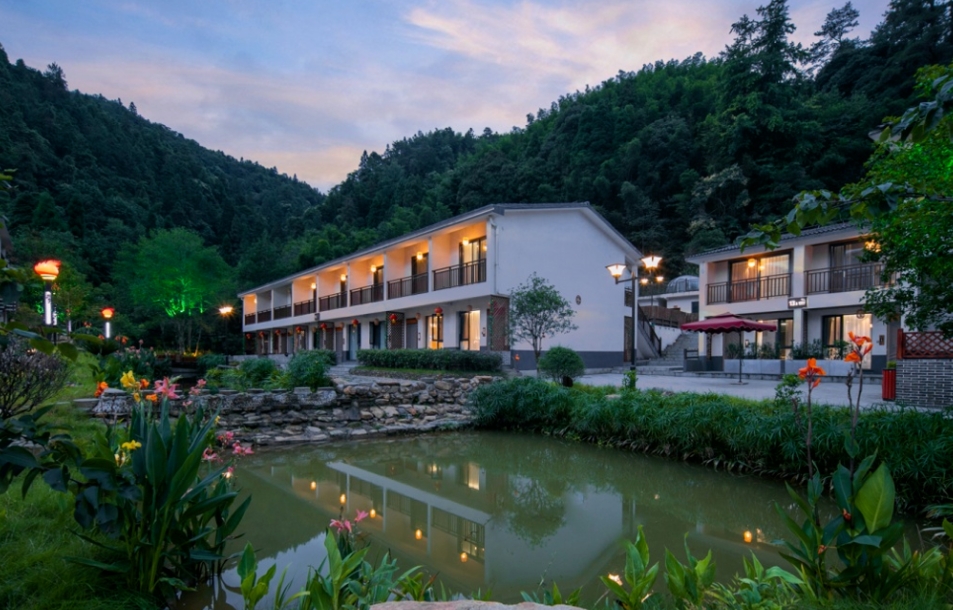

The accommodation in the Jinggangshan scenic area is mainly run by local people. There are many accommodations in Ciping Town. There are various types and specifications of hotels, homestays, and guesthouses. And the supporting facilities are relatively complete. If you are traveling, you can consider staying in Ciping Town. It is also very convenient to take the scenic sightseeing bus to various scenic spots. In addition to the accommodation in Ciping Town, there are many homestays and resorts near scenic spots such as Big and Small Wujing, Maoping scenic area, and Ba Shang in the scenic area. If you go for summer vacation and vacation, you can go to these homestays. They are relatively quiet. And generally, they provide catering services, and you can taste local specialties.
(III) Mountaineering Routes
There are more than 60 scenic spots and more than 320 landscape features in the Jinggangshan scenic area. The landscapes are divided into eight categories: peaks and ridges, rocks, waterfalls, meteorology, karst caves, hot springs, rare animals and plants, and alpine pastoral scenery. There are also 29 revolutionary historical sites and relics from the Jinggangshan struggle period that are relatively well preserved. Among them, 10 are listed as national key cultural relics protection units. There are eleven major scenic areas including Ciping, Longtan, Huangyangjie, main peak, Bijia Mountain, Tongmuling, Xiangzhou, Xiankou, Maoping, Longshi, and Eling. Each scenic area has different scenery. Some are famous for their humanities, and some are famous for their natural landscapes. The entire Jinggangshan scenic area is large and there are many scenic spots. Generally, it takes three or four days to visit all the scenic spots. You can make arrangements according to your own time and preferences. The following is an introduction to the tour routes.
Overall overview: To visit the Jinggangshan scenic area, generally, you arrive at the Jinggangshan tourist center first. Then you can take the scenic sightseeing bus from the tourist center (main station) to various scenic spots. Generally speaking, you can directly follow the sightseeing bus route for sightseeing. The sightseeing buses are: Route A: main station – Xiaojing – Longtan – Baiyuzhu Garden – Huangyangjie; Route B: main station – Dajing – Shuikou; Route C: main station – main peak – Jinggang Lake; Dujuan Mountain special line: main station – Wumachao Tian – Dujuan Mountain; Huangyangjie branch station to Longshi scenic area special line: Huangyangjie – Maoping – Xiangshan’an – Huishi Square – Longjiang Academy; Ciping urban area bus circulation line (urban area bus): main station – Central Road – museum – former residence – station – Beishan.
Tour route: Taking the Jinggangshan tourist center as the boundary, there are Beishan Martyrs Cemetery, Mao Zedong’s former residence, museum, etc. in Ciping District on the south side, and the main peak scenic area, Dujuan Mountain scenic area, Nanshan Park, etc. which are a little farther away. On the north side are Huangyangjie scenic area, Longtan scenic area, Big and Small Jing, Maoping scenic area, Longshi scenic area, etc. Generally, people will visit Huangyangjie, Longtan, the old residence in Dajing, Beishan Revolutionary Martyrs Cemetery, the old residence in Ciping, Revolutionary Museum, the main peak of Jinggangshan, Dujuan Mountain (every April, azaleas are in full bloom all over the mountains, which is very beautiful). If there is time, you can also visit Xiangshan’an, Huishi Square, Longjiang Academy and other places that are a little farther away.
(IV) Itinerary Arrangement
The Jinggangshan scenic area, located in Ji’an City in the southwest of Jiangxi Province, is known as the only subtropical evergreen broad-leaved forest in the world for its large areas of pristine or semi-pristine forests. It is also known as the “cradle of the Chinese revolution” and the “cornerstone of the People’s Republic of China” for its many well-preserved revolutionary historical sites and relics. There are not only beautiful natural scenery in the scenic area, but also humanistic landscapes represented by revolutionary relics. Moreover, Jinggangshan is also a summer resort. The Jinggangshan scenic area is relatively large. Generally, two to three days can be arranged for playing. If there is enough time, the playing time can be extended to fully feel the human history and natural beauty of this red revolutionary base. The following is the itinerary arrangement according to the length of time.
One-day tour route:
①After arriving at the tourist center, in the morning, you can take the scenic sightseeing bus directly to Huangyangjie for playing. After that, you can go to Longtan scenic area, and then visit the old residence in Dajing. In the afternoon, you can visit Beishan Revolutionary Martyrs Cemetery, the old residence in Ciping, and the Revolutionary Museum in turn.
②After arriving at the tourist center, in the morning, you can take the scenic sightseeing bus directly to Huangyangjie for playing. After that, you can go to Longtan scenic area, and then visit the old residence in Dajing. In the afternoon, you can go to the main peak scenic area and Dujuan Mountain scenic area for playing.
Two-day tour route:
Plan 1: Day1: Morning: Huangyangjie, Longtan; Afternoon: Beishan Revolutionary Martyrs Cemetery, the old residence in Ciping, and the Revolutionary Museum. Day2: Morning: The old residence in Dajing, Shuikou; Afternoon: Jinggangshan main peak, Dujuan Mountain.
Plan 2: Day1: Morning: Huangyangjie, Longtan, the old residence in Dajing; Afternoon: Beishan Revolutionary Martyrs Cemetery, the old residence in Ciping, and the Revolutionary Museum. Day2: Morning: Huangyangjie, Xiangshan’an, Maoping Bajiao Tower; Afternoon: Longjiang Academy, Huishi Square.
(V) Clothes and Food
Clothes and food: The Jinggangshan scenic area is located in Ji’an City in the southwest of Jiangxi Province. It has a subtropical warm and humid monsoon climate. It is warm and humid. The annual average temperature is 14.2°C, the average temperature in winter is 3.2°C, and the average temperature in summer is 23.9°C. You can bring clothes according to the normal season. If you stay overnight in the scenic area, you can bring an extra piece of clothing. In addition, the relevant supporting facilities in the scenic area are relatively complete. According to the length of playing time, it is best to bring an appropriate amount of water and snacks by yourself. Basically, there are pedestrian paths in the scenic area. Just wear non-slip and comfortable shoes.
(VI) Expenses
Jinggangshan scenic area (all scenic spot package ticket): 165 yuan/person (valid for five days)
Scenic sightseeing bus: 80 yuan/person
Longtan scenic area cableway ticket (round trip): 70 yuan/person
For each scenic area (spot) such as Huangyangjie, Maoping old site group, and Longtan: 80 yuan/person/time
For each scenic area (spot) such as the old residence in Dajing, Baiyuzhu Garden (mint), Xiaojing Red Army Hospital, main peak, Shuikou, Jingzhushan, Leader Peak, Red Army Valley (Wumachao Tian), and Longjiang Academy: 60 yuan/person/time.
Scenic sightseeing bus: 80 yuan/person
Longtan scenic area cableway ticket (round trip): 70 yuan/person
For each scenic area (spot) such as Huangyangjie, Maoping old site group, and Longtan: 80 yuan/person/time
For each scenic area (spot) such as the old residence in Dajing, Baiyuzhu Garden (mint), Xiaojing Red Army Hospital, main peak, Shuikou, Jingzhushan, Leader Peak, Red Army Valley (Wumachao Tian), and Longjiang Academy: 60 yuan/person/time.
(VII) Other Precautions
Check the relevant announcements of the scenic area in advance. You can view the relevant announcements on the Jinggangshan Tourism official account. You can make reservations and buy tickets in advance. The Jinggangshan scenic area is located in Ji’an City, Jiangxi Province. There are Wugong Mountain scenic area, Yangshimu scenic area, Taoyuan Terrace scenic area and other scenic spots around. You can arrange to visit them together. In addition, there are many special delicacies in Jinggangshan, such as Jinggang Crispy Pork, Lianhua Duck in Blood Sauce, Jinggang Smoked Bamboo Shoots, Donggu Moldy Fish, Crispy Sausage Beans, etc. You can also taste Jinggang Red Rice Wine.